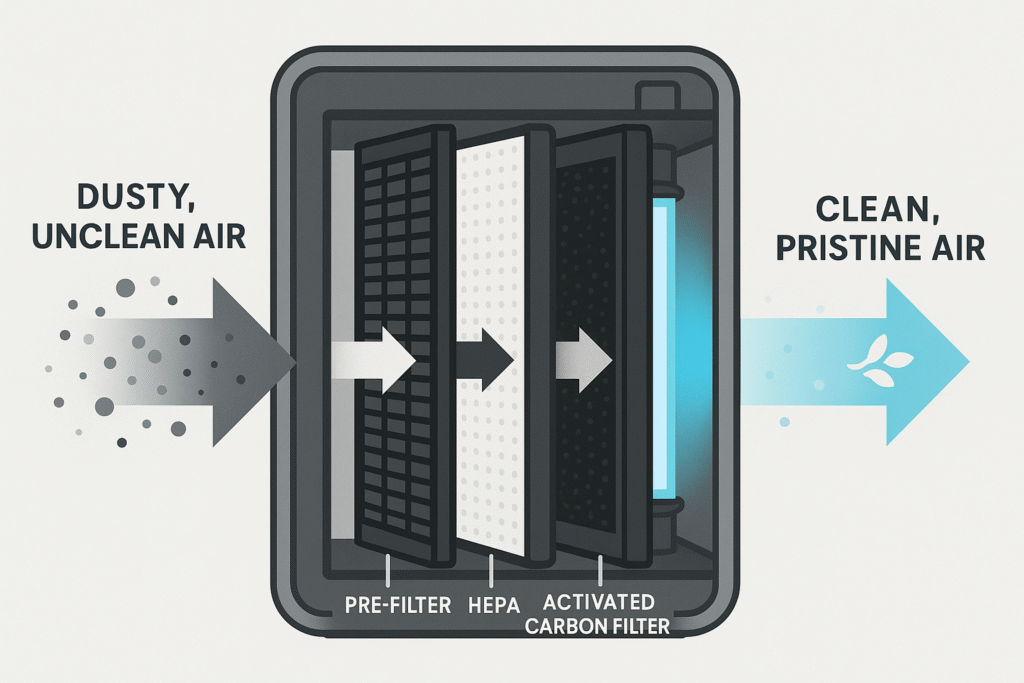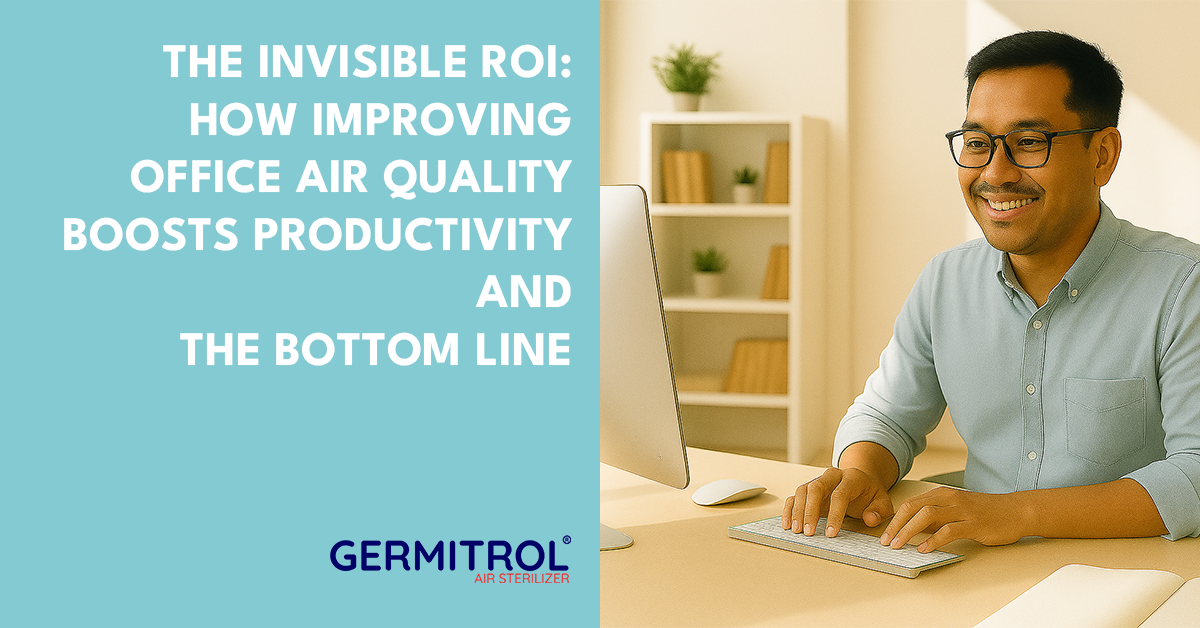Ever wondered why a Monday morning feels a bit more sluggish than it should? The culprit might not be your coffee machine—it could be the very air you’re breathing. The link between air quality for office productivity is a topic too important for modern businesses to ignore. While companies have focused on ergonomics, lighting, and layout, a crucial new factor is emerging as a key driver of performance and employee well-being: indoor air quality.
This article goes beyond the basics to explore how the quality of the air in your office directly impacts cognitive function, morale, and productivity. Using the real-world example of a company that took a proactive approach, we’ll demonstrate that investing in clean air isn’t just a cost—it’s a powerful investment with a measurable return. The secret to a more efficient team might just be found in the air they breathe.

The Hidden Cost of Stagnant Air
The average person spends a third of their life at work. Unfortunately, the air in many offices is far from ideal. Poor ventilation, allergens like dust and mold, and Volatile Organic Compounds (VOCs) from furniture and cleaning supplies can lead to what’s often called “Sick Building Syndrome.”
The symptoms are subtle but impactful:
- Cognitive Decline: Studies from reputable sources like the Harvard T.H. Chan School of Public Health have shown that poor air quality can reduce a person’s ability to focus, make decisions, and think creatively. Reduced oxygen and increased carbon dioxide levels can directly impact brain function.
- Increased Absenteeism: The recirculation of airborne pathogens like viruses and bacteria can lead to a higher rate of illness, causing more sick days and disrupting team flow.
- Employee Fatigue: Constant exposure to stale or polluted air can cause headaches, eye strain, and general fatigue, making employees feel less energized and productive.
For a business, this adds up to a significant financial burden in the form of lost productivity, low morale, and increased healthcare costs. The hidden impact of poor air quality for office productivity is one of the most overlooked factors in business operations.
The Science Behind the Savings
So, what is the connection between the air and our brains? Our cognitive function relies on a steady supply of oxygen and the absence of airborne irritants. When a person is exposed to pollutants, their body’s systems are under constant stress. This can lead to inflammation and a measurable decrease in mental clarity.
Conversely, studies have shown that in well-ventilated and purified spaces, people consistently perform better on tests of memory, concentration, and task efficiency. The investment in clean air is not just about reducing sick days; it’s about optimizing the brain’s environment to allow for peak performance. This direct link between air quality and office productivity is a powerful argument for proactive measures.
The Solution: Going Beyond Basic Filtration
While traditional HVAC systems are a necessity, they are not designed to actively purify the air. Their filters, typically MERV-rated, are good at trapping larger dust particles but are often inadequate for neutralizing the microscopic threats that affect human health and cognitive function. This is where Germitrol’s advanced air sterilization technology provides a crucial layer of protection.
Our UVC air sterilizers provide a complete, multi-stage defense system that addresses the full spectrum of airborne threats:
- Stage 1: The Pre-Filter. Captures larger airborne particles like hair and dust, which extends the life of the more expensive HEPA filter.
- Stage 2: The Medical-Grade HEPA Filter. Traps an astonishing 99.97% of particles as small as 0.3 microns, including fine dust, pollen, and allergens.
- Stage 3: The Activated Carbon Filter. Designed to absorb odors, gases, and the VOCs that contribute to “stale office air,” leaving the environment feeling fresh and clean.
- Stage 4: The UVC Chamber. This is the core of our technology. High-output UVC lamps actively destroy the DNA of airborne viruses, bacteria, and mold spores, rendering them harmless. This critical step ensures the air leaving the unit is not just filtered, but biologically sterilized.
This is a comprehensive solution for achieving superior air quality for office productivity.
A Case Study: From Low Morale to High Performance
The Challenge: Alpha Solutions, a mid-sized tech company with 150 employees, was experiencing a 25% increase in seasonal sick days over two years. Employee satisfaction surveys noted complaints about “stuffy air” and a general feeling of low energy in the afternoons. The management team recognized they were losing valuable time and money due to low morale and productivity dips.
The Intervention: The company decided to pilot Germitrol UVC air sterilizers in their main office areas, including open-plan workspaces and conference rooms. The goal was to prove the link between air quality for office productivity and their bottom line.
The Outcome: The results were tangible and immediate.
- Reduced Absenteeism: Within six months, Alpha Solutions reported a 15% decrease in overall sick days, saving the company a significant amount in lost productivity.
- Improved Focus: A follow-up employee survey found that 75% of staff reported a noticeable improvement in their ability to concentrate. Employees noted “fewer headaches” and a “feeling of freshness” that previously was absent.
- Increased Satisfaction: Overall employee satisfaction with the work environment rose by 20%, reinforcing the positive impact on morale and providing a powerful justification for the investment.
For Alpha Solutions, the investment in UVC air sterilization paid for itself not only in reduced sick days but in the invaluable, long-term asset of a happier, more productive workforce.
Conclusion: A Strategic Investment in Your People
In today’s competitive landscape, your employees are your most valuable asset. Investing in the quality of the air they breathe is one of the most effective ways to protect that asset. By proactively neutralizing airborne threats, you can reduce absenteeism, boost cognitive function, and foster a more positive and productive work culture.
Clean air isn’t a perk; it’s a performance driver. Taking action to improve air quality for office productivity is a clear and effective way to secure a healthier and more prosperous future for your business.

